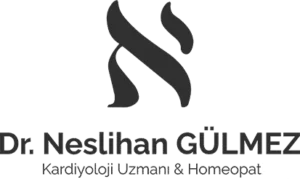What is Repertoire and Repertorization in Homeopathy
One of the frequently repeated terms in homeopathy is the concepts of repertoire and repertorization. In this article, we will touch on these two terms and talk about the benefits and limitations of repertorization.
The repertoire is a homeopathic materia medica index packed with information gleaned from toxicology, remedy proofing and clinical experience.
Repertorization, on the other hand, is essentially a screening that starts with a wide selection and slowly narrows the field, giving us enough small groups of remedies so that the final selection becomes easier with more references to materia medica. In summary, repertory is the directory where the remedies are located, while repertorization is the process or process by which we can list the remedies and sift through the area for the correct remedy.
The physician, who has never or rarely used his repertoire, complains of its elaborate methods and time-consuming nature, but someone who uses it meaningfully will find it very useful and time-saving.
Let’s take a look at what using a repertory gives us;
- Avoiding routines – For a stomachache that resolves with firm pressure, the routine prescriber adds Bryonia to their prescription, but there are 7 remedies in the Repertoire for the Stomach – pain – relieves pressure rubric, but they do not contain Bryonia. The repertoire teaches the physician to be careful in choosing drugs and to avoid ruthism.
- Teaches the relative importance of various drugs by grading – It is important that symptoms, according to their intensity [rating] in a patient, match with similar intensity in the chosen remedy. An ideal homeopath analyzes each symptom in each case and, as with medicine, makes the final choice based on the intensity and degree of each symptom of the patient.
- To quickly select the similimum – The repertoire reduces the laborious work of repertoire of the whole case when there are distinctive and striking symptoms, or any of the aetiology that can be immediately referred to in the appropriate repertoire. The repertoire therefore simplifies and strengthens our selection for particular drugs. Symptoms are converted into rubrics, these rubrics are in the repertoire. The repertoire provides insight into drugs that work together so that the desired remedy can be found.
- Helps to find the exact symptom – In the repertoire, a complete symptom with all its components can be referred to a concomitant place scattered over several places, especially in materia medica.
- Promotes the discovery of medicine – it may not have occurred to you or it will make you discover information that will astonish you, as if such a symptom will remain in your mind forever.
- Second prescription – Recommends relevant drugs that can assist in selecting a drug for follow-up or second prescription.
- Its continuous use makes the physician efficient – it ensures the continuous use of Materia Medica, refreshes the knowledge about difficult symptoms and drugs of different grades.
- Helps the physician to ask rational questions – Sometimes patients cannot tell their symptoms correctly or the physician cannot take the symptoms away from them for the choice of remedy, in which case they can use the repertoire to their advantage and finally choose the drug by asking questions guided by the repertoire. .
- The repertoire teaches us to pay attention to the symptoms of the disease [common symptoms] and to consider only the symptoms that are outside the disease [uncommon symptoms of the disease].
Allopaths diagnose the disease in order to begin treatment while homeopaths diagnose the disease in order to eliminate the general symptom of the disease and to consider the rest of the symptom outside the gnomonic symptom.
The repertoire makes the study of MM extremely interesting and more and more fun about rare symptoms. When we are in doubt about an unclear rubric, we are compelled to read materia medica for its full meaning.
- Materia helps medica work – Take any remedy and look at any part of the repertoire he wants to work with, not the presence of the remedy against the rubric provided. Assistance in the comparative study of drugs. The intensity of the symptom in a drug can be studied to aid in the final selection of the drug. Repertoire expands our knowledge by providing more solutions for important notes.
- Remembering – Sometimes a symptom strikes a physician but is unable to remember the medication. In such cases, he can ask for help from the repertoire.
Repertoire limitations
Repertoire is basically an index, never suggesting a final selection.
Different repertoires have different philosophy and structure.
New additions to Materia medica cannot be included in the repertoire.
No guidance on effect, dose and repetition.
Nosodes and sarcods are not well represented.
If the doctor makes a mistake in interpretation and only counts the symptoms and signs, he will fail.
The use of the repertoire cannot be independent of the knowledge of materia medica, organon, or clinical subjects.
